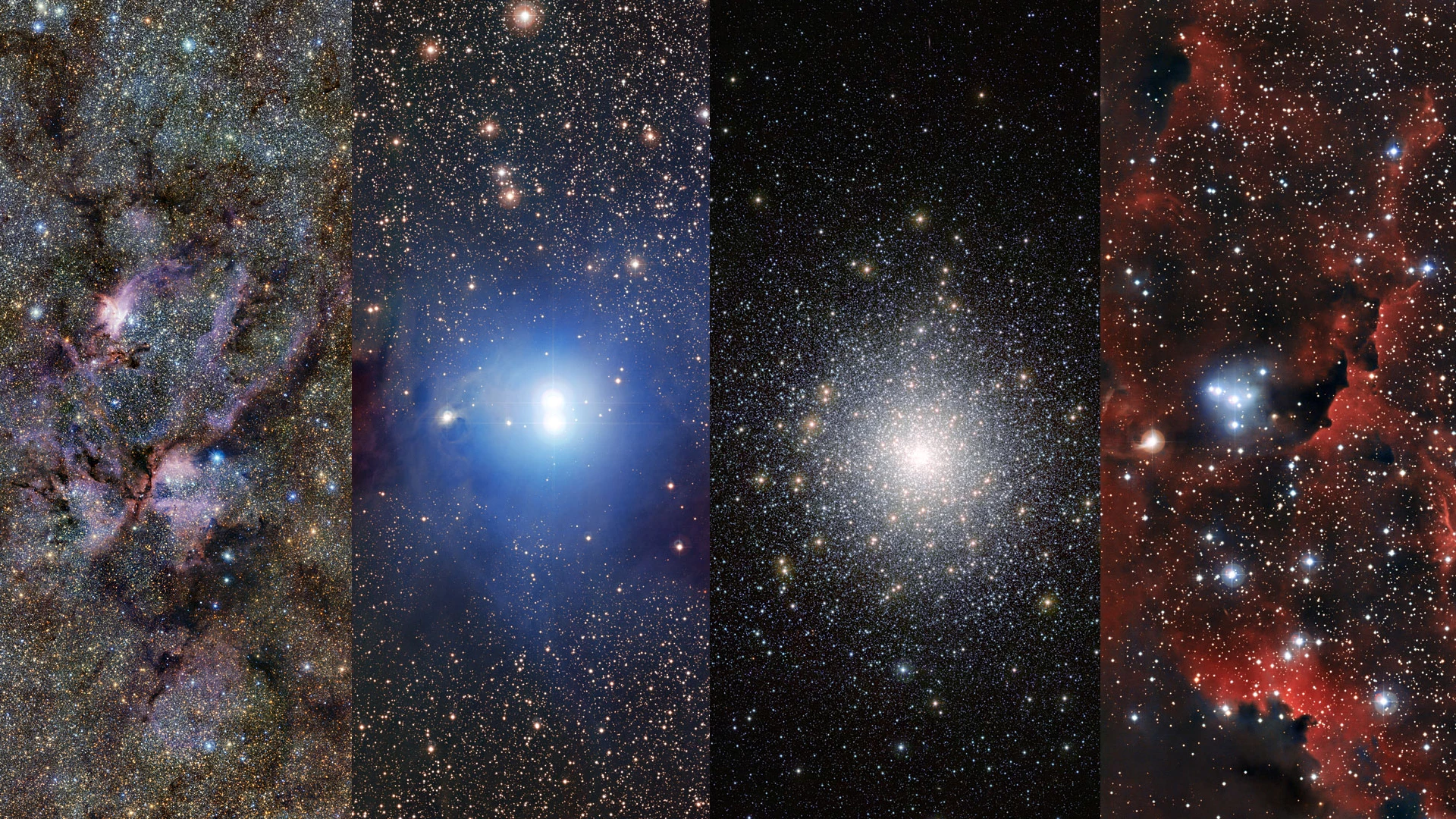Despite being only a couple of months into the year, the various telescopes of the European Southern Observatory (ESO) have already provided some truly breathtaking sights. From dusty stellar nurseries to giant star clusters, here's a look at the best ESO images of 2013 so far.
The Lobster Nebula

This infrared image, captured by the ESO's Visible and Infrared Survery Telescope (VISTA) shows stellar nursery NGC 6357. The image provides a new view of the object, allowing us to see past the dust clouds that obscure visible light images. This provides a closer look at the glowing clouds of gas and dust and the bright young stars that form from them.
The object resides 8,000 light-years away in the constellation of Scorpius, and contains three of the largest stars in the Milky Way.
The cosmic gecko

This image from the Wide Field Imager on the MPG/ESO 2.2 meter telescope at the La Silla Observatory in Chile shows the gecko-shaped dark cloud Barnard 86 next to the bright star cluster NGC 6520.
The pair are located in the Large Sagittarius Star Cloud, an area populated by some of the brightest stars in the Milky Way. This accentuates the presence of the unusually-shaped Barnard 86, an isolated dark nebula known as a Bok globule. The nebula's discoverer, Edward Emerson Barnard, described it as “a drop of ink on the luminous sky.”
The wings of the Seagull Nebula

This image shows a section of IC 2177 (the Seagull Nebula) that forms one of the object's “wings." Taken by the Wide Field Imager on the MPG/ESO 2.2 meter telescope, the image reveals a mix of red and dark clouds surrounding the bright stars.
The Seagull Nebula is thought to be made up of mostly hydrogen gas, with the red hue of the image suggesting the presence of ionized hydrogen. In HII regions such as this, hot stars form within the clouds, putting out ultraviolet radiation that causes the gas to glow brightly.
A dusty stellar nursery

Another image from the MPG/ESO 2.2-meter telescope, this time showing the dark cloud known as Lupus 3. The object is a stellar nursery containing huge amounts of cool cosmic dust, and is the sort of formation region that our own sun emerged from some four billion years ago.
The cloud resides around 600 light-years away in the constellation of Scorpius and is about five light-years across. The stars to the right of the cloud were likely formed from a similar object to Lupus 3 and are thought to be less than a million years old.
The star cluster 47 Tucanae

This image of the globular cluster 47 Tucanae (NGC 104) was taken by the ESO's VISTA telescope. The cluster contains millions of old stars bound together by gravity, and is located around 15,000 light-years away. Despite its distance, the sheer size of the object, at some 120 light-years across, makes it appear around the same size as the full Moon.
NGC 104 orbits the center of the Milky Way and contains a number of unusual and intriguing stars, including vampire stars, X-ray sources and small dead stars that rotate at extreme speeds, known as millisecond pulsars.
Source: ESO








